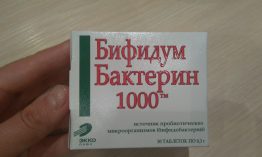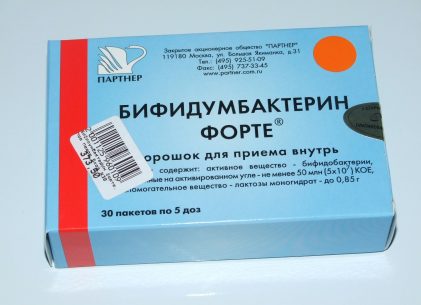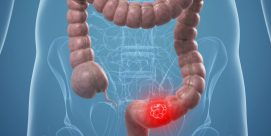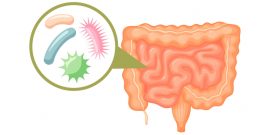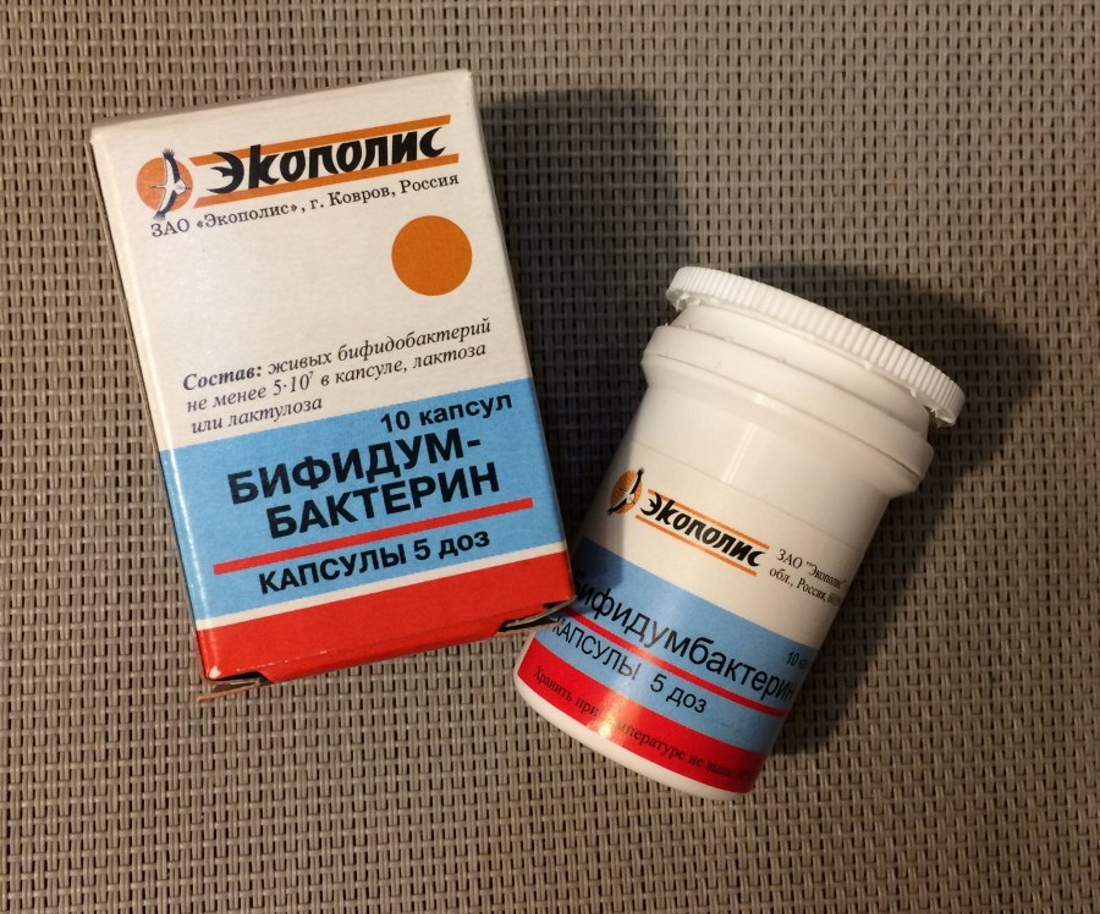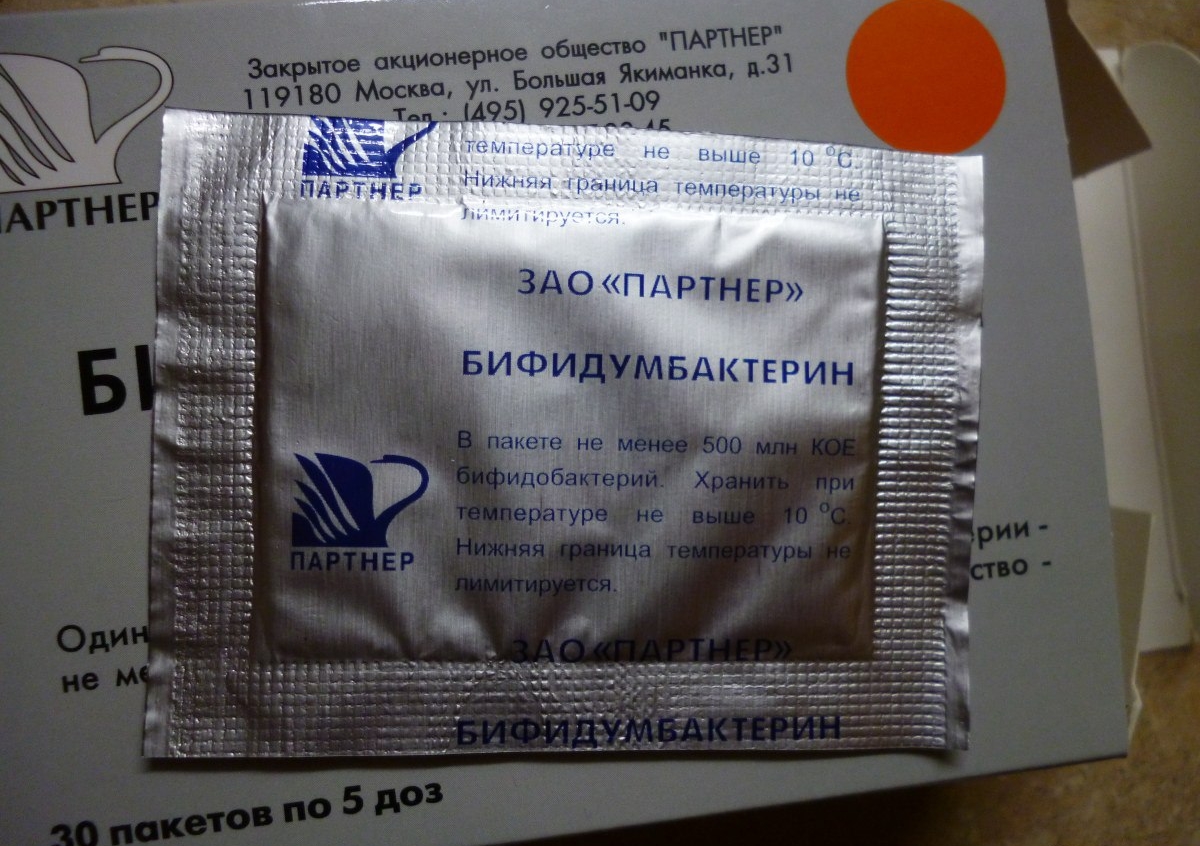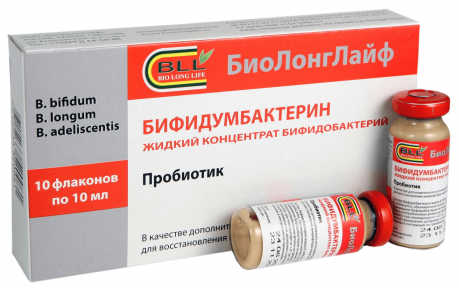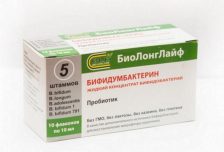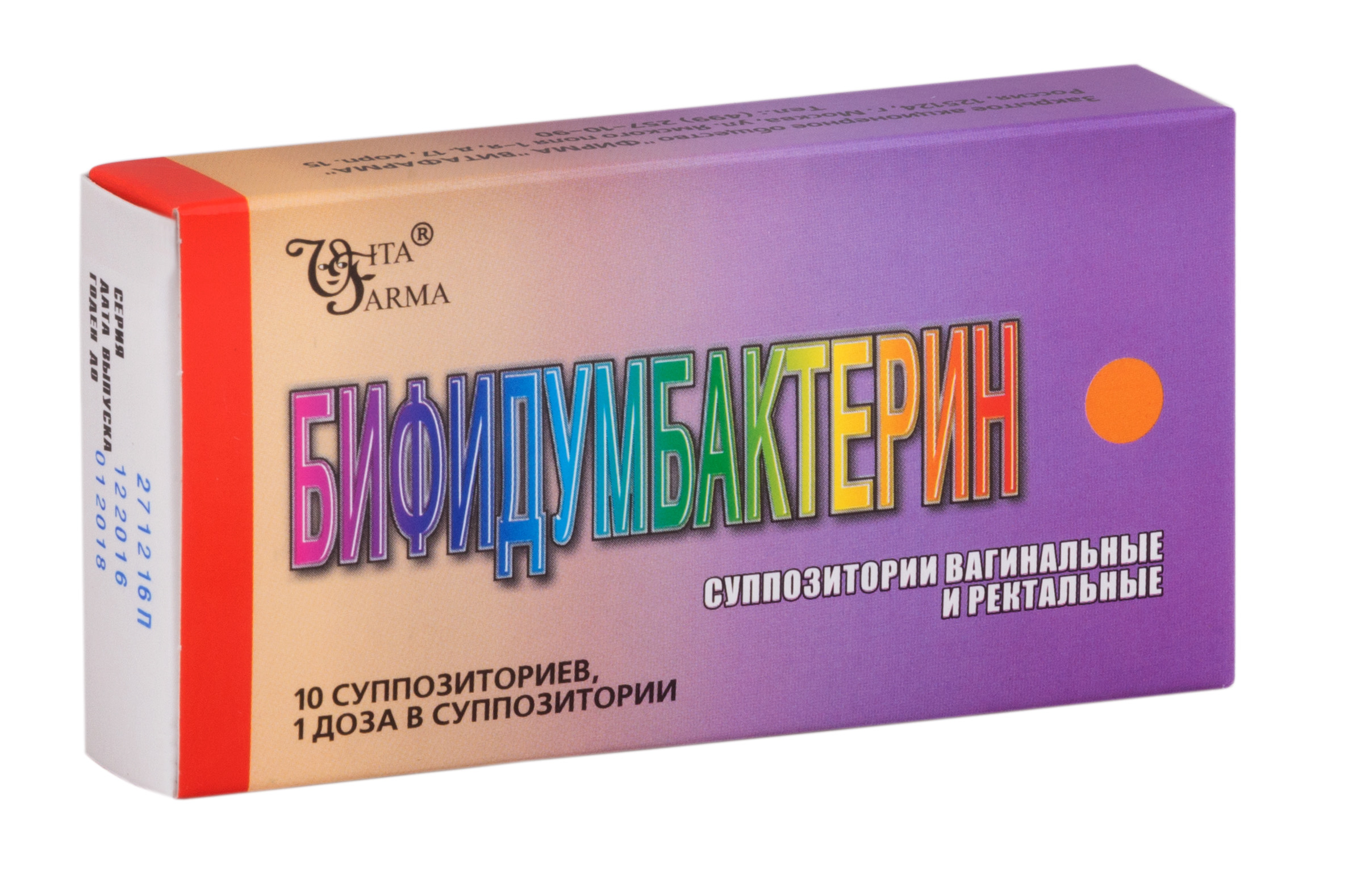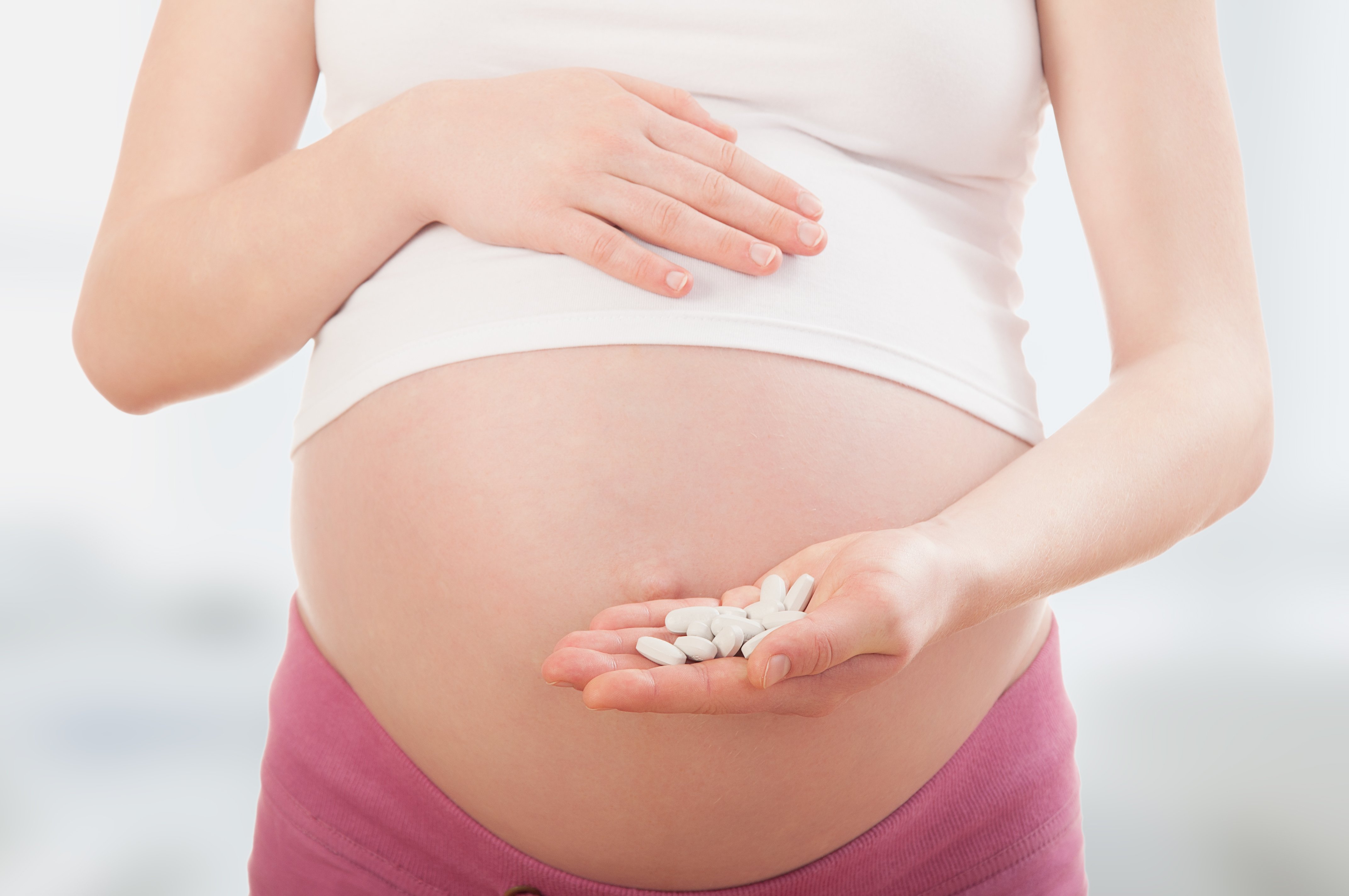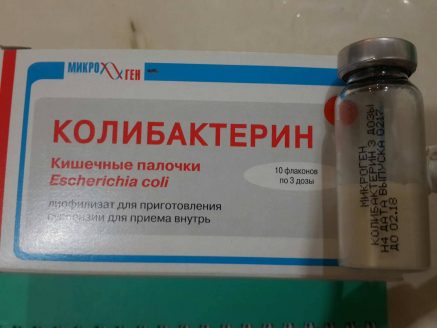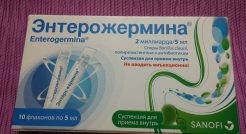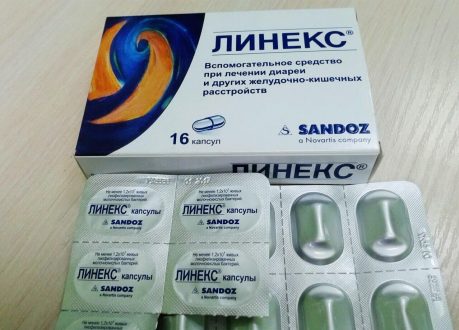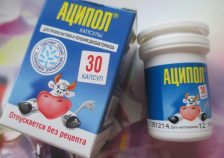Bifidumbacterin belongs to probiotics. As a result of its intake, intestinal microflora is normalized, dysbiosis, diarrhea, allergies and other pathologies that arise against the background of intestinal imbalance are eliminated. After treatment with a probiotic, immunity improves, which affects a decrease in the number of diseases.
Material Content:
- 1 Forms of release, composition
- 2 Pharmacological action, pharmacodynamics and pharmacokinetics
- 3 What is Bifidumbacterin prescribed for?
- 4 Instructions for use for adults and children
- 5 During pregnancy and lactation
- 6 Drug interaction
- 7 Contraindications, side effects and overdose
- 8 Analogs of Bifidumbacterin
Forms of release, composition
Bifidumbacterin has some varieties. They are a variation of one drug, have different trade names. The main differences of probiotics are in the amount of active substance. This allows you to choose the most convenient variation of the drug. All types of Bifidumbacterin are prescribed with the same indications.
The following types of drug are available:
- Bifidumbacterin consists of bifidobacteria inhabiting the gastrointestinal tract of an adult.
- Bifidumbacterin forte - a combined medication. Along with bifidobacteria, it contains a sorbent in the form of activated carbon. The latter substance helps to eliminate pathogenic microorganisms.
- Bifidumbacterin 1000 is a combination drug consisting simultaneously of probiotics and nutrition for them - prebiotics;
- Bifidumbacterin Multi, which has varieties by age group. There is a drug to normalize the microflora of children from 1 month to 3 years, up to 14 years and up to 18 years. That is, the composition of this species includes bifidobacteria that inhabit the children's digestive tract.
Bifidumbacterin is available in the following forms:
- in tablets;
- in capsules;
- in powders;
- in liquid concentrate;
- in suppositories;
- in concentrated solution.
Any variety of Bifidumbacterin consists of live microorganisms of different dosages, measured in doses.
Pharmacological action, pharmacodynamics and pharmacokinetics
After taking Bifidumbacterin, intestinal microflora normalize, immunity improves. These processes provide bifidobacteria that are in the medicine and represent the human intestinal microflora.
After the therapy, as a result of normalization of the intestinal microflora, the following processes are provided:
- the development and growth of pathogens, fungi is inhibited;
- dysbiosis is eliminated;
- the balance between pathogenic and natural bacteria is leveled;
- synthesis in the required volume of folic acid, biotin is being established;
- bile acids are broken down, which helps to reduce the concentration of cholesterol in the blood;
- digestion is normalized;
- the period during which food passes through the intestines is regulated;
- toxins are eliminated as a result of improving the immune system;
- relapse of ulcers, gastritis are reduced;
- microflora normalizes after antibiotic therapy;
- side effects from taking other drugs are minimized;
- diarrhea developing on the background of intestinal pathologies is eliminated.
For information, the duration of Bifidumbacterin depends on its form. In tablet form, the drug is absorbed after 2 hours, in the form of a liquid concentrate it begins an instant effect.
What is Bifidumbacterin prescribed for?
Bifidumbacterin is prescribed to combat the following conditions:
- dysbiosis against the background of antibiotic therapy, radiation exposure, chemotherapy, stress, hormonal drugs;
- impaired bowel function;
- intestinal infection;
- an allergic reaction;
- bacterial vaginosis, colpitis;
- chronic constipation.
It is known to use a probiotic in the form of prophylaxis to exclude mastitis during lactation.
For the treatment of children, Bifidumbacterin is prescribed in a complex to combat the following conditions:
- infectious process;
- excessively enlarged organ;
- rickets;
- diathesis.
On a note! Bifidumbacterin for newborns is used to optimize the transition to artificial feeding.
Instructions for use for adults and children
Instructions for use Bifidumbacterin in detail indicates how to take a probiotic for the treatment of children, adults, based on the form of the medication.
Bifidumbacterin Capsules
The capsule form of the drug is recommended for use by children over 3 years of age and adults. Children are treated three times a day with 1 capsule. Therapy of adults with three doses of 2 capsules. In some conditions in childhood, up to 6 capsules are prescribed daily. To relieve the acute stage, in the form of an addition to the main treatment, 10 tablets are prescribed 3 times a day. The treatment course is 2 weeks.
Sachet powder
Bifidumbacterin in powder form is mixed with a small amount of lactic acid product before use. If the treatment is carried out for an infant, then breast milk is used for dissolution. When properly dissolved, not completely diluted substances are obtained, but mixed suspended particles. It may take about 10 minutes to mix.
Bifidumbacterin powder is usually prescribed in the following dose:
- newborns are prescribed one sachet twice a day;
- children under 3 years old - one sachet four times a day;
- children under 12 years old - two sachets three times a day;
- over 12 years of age - two sachets four times a day.
The therapeutic course of children - up to 7 days, adults - up to 20 days.
Bifidumbacterin Liquid Concentrate
Bifidumbacterin in concentrated form can be used not only internally, but also in the form of local application.
As an internal medicine, a probiotic is used in the following dosage:
- up to a year - 1 ml;
- children 3 years old - 2 ml each;
- children 7 years old - 3 ml each.
For 1 ml of concentrated Bifidumbacterin, 20 drops are necessary. As a local remedy, it is known for mastitis. In this case, the nipple should be treated for a week before the feeding procedure. A single treatment accounts for 2 doses of the drug.
For rectal administration, the concentrate is administered by microclyster. In this case, 3 ml of Bifidumbacterin is diluted in 50 ml of boiled water. In the treatment of gynecological diseases, a swab soaked in saline should be applied with 3 ml of a concentrated preparation. Treatment is carried out within 5 hours.
Vaginal suppositories
Bifidumbacterin suppositories are often prescribed as a complex treatment in gynecology. Typically, therapy is carried out by a two-time administration of one suppository for 10 days. In order to speed up the healing process, a parallel intake of vitamin B is recommended. In order to achieve a better result, antibiotic therapy must be stopped. Since it negatively affects the vaginal microflora.
Prevention of the inflammatory and infectious process before gynecological operations, obstetric care is carried out by a two-time administration of one suppository a week before the expected date. Vaginal dysbacteriosis, which arose against the background of antibiotic therapy, is treated with a single suppository, administered twice within 10 days. If necessary, the treatment course is repeated every 3 months.
During pregnancy and lactation
During childbearing and when breastfeeding, Bifidumbacterin is used according to the doctor’s testimony. The drug does not adversely affect the children's, female body. The probiotic is widely used in postpartum practice, in gynecology, for the prevention and treatment of diseases.
Drug interaction
In medicine, no negative interaction of other medications with Bifidumbacterin has been noted. But there are cases when, with the simultaneous use of a probiotic with antibiotics, the effectiveness of the first medicine worsened. With a parallel intake of vitamins, the therapeutic properties of Bifidumbacterin are enhanced.
Contraindications, side effects and overdose
In medicine, there are no absolute contraindications for treatment with Bifidumbacterin. You can not use a probiotic with hypersensitivity to the components. The drug has no side effects. But it is recommended to use it with caution in the treatment of children suffering from enzyme lactose deficiency. Due to the fact that the medicine does not accumulate in the body, no cases of overdose have been identified. If once a person has taken a large dosage, then excess medicine is excreted in the feces.
Analogs of Bifidumbacterin
If there is a need, then you can pick up Bifidumbacterin analogues according to the active substance, but with a different dosage of active components.
To do this, recommend the use of:
- Colibacterin;
- Enterogermina;
- Acidolac;
- Acidolaca Baby;
- Acidolaka Junior.
To group analogues containing similar active substances, include:
- Acipol;
- Hilak;
- Simbiter;
- Lactovit;
- Linex;
- Biosporin;
- Beefiform.
The listed drugs may differ in therapeutic effect, the development of side effects. In this connection, the replacement of the original with analogues should be carried out exclusively by the attending physician. Therefore, it is impossible to answer unequivocally what is better - Bifiform or Bifidumbacterin, since each drug is prescribed purely individually. The same applies to the choice between Bifidumbacterin or Linex. Since these medicines contain different types of probiotics, which sometimes plays a decisive role in the treatment of certain diseases.
Bifidumbacterin belongs to the group of medicines consisting of beneficial microorganisms that normalize the intestinal microflora and improve the immune system.



